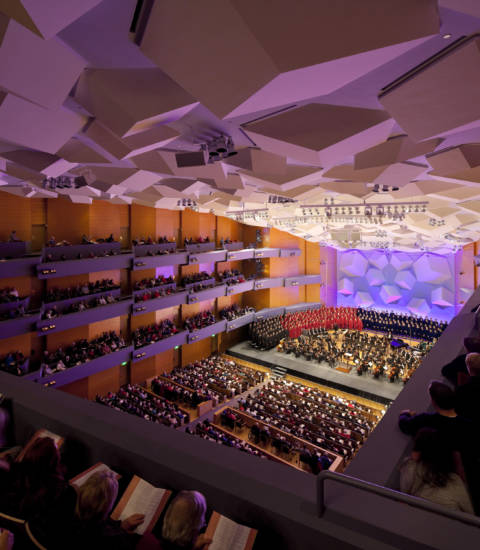Music Acoustics
Acoustics is one of the primary aesthetic dimensions of music. Performers create the sound, the room (and perhaps amplification system) transmits it to the audience, and the audience hears it, listens, appreciates and responds. The “character” of the sound is important to both the performers and the audiences, and becomes part of the musical experience. There is emotional communication from performers to audience, from audience back to performers, and between the performers. Some of the factors we consider are:
Acoustics for performers
- Hearing each other – communication between players/singers/speakers
- Honesty of tone – performers convey the sound they want to make
- Support from the room response – to feel the room is an extension of the instrument or the ensemble
- Control of over-loudness – for the long-term health and safety of performers onstage, and in rehearsal studios and practice rooms
Acoustics for audience
- Impact, strength
- Immersion, surround
- Balance of clarity and reverberance
- Warmth of tone
- Balance between sections
In an existing facility we outline how the constraints of the building can inform the acoustical quality, and help the client balance the quality with the budget.
Good acoustics for amplified music are generally not the same as for natural sound. We address acoustics and uses together, first at a strategic level with the business plan and programming intentions. We consider acoustical flexibility, and when it is appropriate. And, we decide on the most appropriate technologies, eg. flexible geometry, flexible finishes, and electro-acoustic enhancement.
